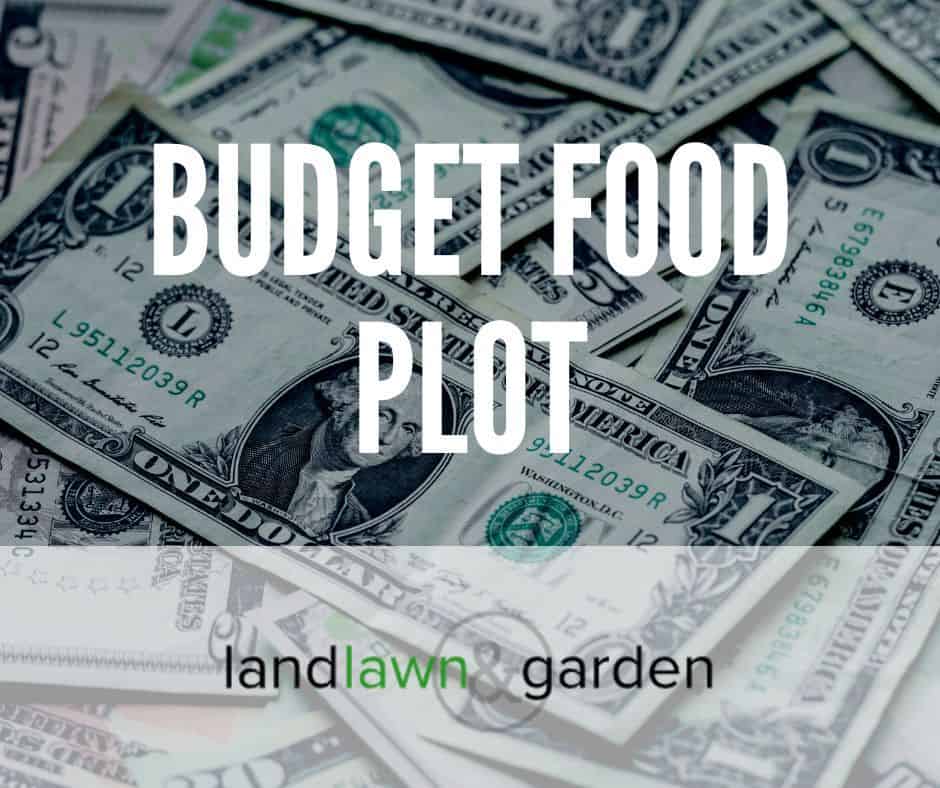Food plots can be expensive; with all the needed equipment and the (sometimes) overpriced seeds, it can begin to be a burden on the bank account. But does a food plot really need to be expensive? How do you create a food plot while on a budget?
How to create a successful food plot on a budget:
- Choose an ideal piece of land for your food plot
- Get a soil test done
- Make your food plot smaller
- Only use the necessary equipment to prepare your food plot
- Mix your own food plot seeds instead of buying an already blended mix
What is the necessary equipment to prepare a food plot? What should you look for when looking for a piece of land for your food plot? What are the cheapest forage seeds? In this article, we answer these questions as well as go through everything you need to know about creating a food plot on a budget.
How To Create A Food Plot On A Budget

Creating a food plot on a budget may seem far-fetched to some, but it can actually be done quite easily. There are ways you can make the land work for you, and you may need less equipment than you think. So, let us go through a few ways you can cut costs when creating your food plot.
Choose An Ideal Piece Of Land For Your Plot
Before you even start planting your food plot, you need to ensure that you choose the right piece of land. The land you choose can have a considerable impact on the success of your food plot. You need to select a piece of land that has good cover from the wind because if one strong gust of wind comes through your plot right after you have seeded it, then your seeds will blow away.
If this occurs, you will need to reseed, which will cost more. You should also work with nature when looking for a piece of land for your plot. You can try to find a natural break in the tree canopy instead of chainsawing down trees.
This will save you money in fuel for a chainsaw, and your plot should still get enough sunlight for your plants to grow correctly. You can also choose a piece of land that has a lesser amount of foliage but good quality foliage already on the plot.
This will reduce the amount of herbicide you need to use, and the good foliage that is already there can act as extra forage that you will need to plant yourself. These plants may have already dropped seeds as well, meaning that when you fertilize the plot, you may get more forage growing than what you initially planted.
Get A Soil Test

If you are not planting forage native to the area your plot is located in, then it would be better if you did a soil test on this plot. This may sound redundant as we are trying to cut costs, but if you plant non-native forage on your plot without preparing the soil with the proper nutrients for that forage, then your food plot will fail.
This would mean that all the time you spent and seeds you sowed and paid for would have been for naught. So, knowing the nutritional requirements for the forage you are planting and knowing how fertile the soil of your food plot is, or if you need to add anything to the soil, is essential to a successful food plot.
Getting a soil test done can and will save you money in the long run if you are planting non-native plants on your food plot.
Make Your Plot Smaller
If you have a large food plot, that does not automatically mean that your food plot will be successful, so why create a large one? You can save money by making your food plot smaller without impacting the number of deer your food plot will attract.
You can create a food plot that is half an acre to one acre, and you will still have a successful food plot. This smaller food plot will save you money in the preparation, seed costs, and maintenance that will need to be done later.
Only Use The Necessary Equipment
You do not need special equipment or even a tractor to create a good food plot. You can go for an easy-to-make, no-till food plot. These food plots only require equipment that you most likely already own or that is cheap to buy.
All you need to create a food plot is a garden rake, a weed eater, some lime and fertilizer, herbicide, a hand-seeder, and the seeds you want to plant. If you buy your lime and fertilizer in bulk, then it will be cheaper, and you will have some left over for next year’s seeding.
Mix Your Own Food Plot Seeds

Instead of buying seed bags already mixed, you can mix your own seeds at a lower cost. At most farm supply stores, they offer bulk seeds of all different kinds. If you buy these and combine them into a good mixture with the ratio of 20:20:20, then you can save money and have more for next year too.
If you do this, you can make sure that all the seeds you are planting are native to your food plots area. Most already blended seed bags at supply stores cost around $25; this means that you will spend about $100 on seed alone for one plot.
If you blend your own seed, you can cover one food plot in seed for around $15, which is a significant price difference.
What Is The Cheapest Forage To Plant On Food Plots?
Knowing what forage is native to your plot’s location is essential, but choosing a cheap seed can sometimes be just as crucial. Some forage seeds are more affordable than others.
If you are looking for a cheap seed that offers quality forage, you should go for some clover seeds. Clover grows fast during the spring, and it is a high-quality forage with crucial nutrients for healthy antler growth in bucks and for does that are carrying fawns.
Once clover is established in your food plot, it can remain viable for multiple years with proper care, meaning that you may not need to reseed your food plot. So, clover is cheap, and it will attract deer and keep them coming back to your food plot for several years.
Just ensure that you buy the clover variety that is bred for deer consumption and not cow consumption.
Wrapping Up
Food plots do not need to be expensive to set up and maintain; in fact, you can create a food plot for relatively cheap. You just need to work with nature and make a no-till food plot that is smaller in size as this requires less equipment to prepare and maintain. You should always choose the right seeds for your food plot that are native to the area, as this will cost less and require less maintenance. Good luck with your budget food plot!

Kevin is the owner of Land Lawn & Garden. In addition to taking a lot of pride in his lawn at home, he also helps manage the family land. You can find more about him here.

